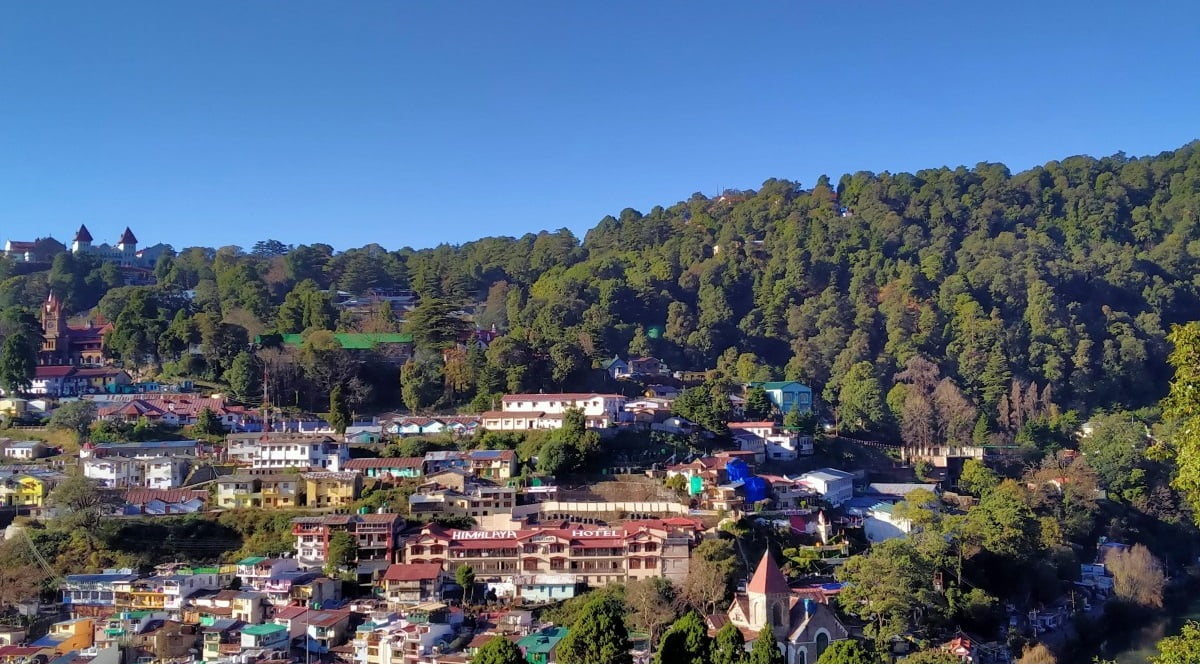Shimla also was known as Simla, is the capital and the largest city in the northern Indian state of Himachal Pradesh, Dharamsala being the other capital. Shimla is also a district that is bounded by Mandi and Kullu in the north, Kinnaur in the east, the state of Uttarakhand in the southeast, and Solan and Sirmaur. In 1864, Shimla was declared as the summer capital of British India, succeeding Murree, northeast of Rawalpindi. After independence, the city became the capital of Punjab and was later named the capital of Himachal Pradesh. It is the principal commercial, cultural and educational center of the hilly regions of the state. As of 2011, the city had 171,817 permanent residents and was one of the least populous capital cities in India. Small hamlets were recorded prior to 1815 when British forces took control of the area.
The climatic conditions attracted the British to establish the city in the dense forests of the Himalayas. As the summer capital, Shimla hosted many important political meetings including the Simla Accord of 1914 and the Simla Conference of 1945. After independence, the state of Himachal Pradesh came into being in 1948 as a result of the integration of 28 princely states. Even after independence, the city remained an important political center, hosting the Simla Agreement of 1972. After the reorganization of the state of Himachal Pradesh, the existing Mahasu district was named Shimla. Its name is derived from the goddess Shyamala Devi, an incarnation of the Hindu goddess Kali[citation needed]. As of 2011. Erstwhile Mahasu comprises 19 hill states, namely Baghal, Baghat, Balsan, Bashar, Bhajji, Beja, Darkoti, Dhami, Jubbal, Keonthal, Kumharsain, Kunihar, Kuthar, Mahlog, Mangal, Nalagarh (Hindur), Sangri, and Tharoch. Later on delimitation Baghal, Baghat, Kunihar, Nalagarh (Hindur), Kuthar went into from Solan district.
Shimla is home to a number of buildings that are styled in the Tudorbethan and neo-Gothic architectures dating from the colonial era, as well as multiple temples and churches. The colonial architecture and churches, the temples, and the natural beauty of the city attract a large number of tourists. The major attractions include the Viceroy Lodge, the Christ Church, the Jakhoo Temple, the Mall Road, and the Ridge, which together form the city center. The Kalka–Shimla Railway line built by the British, a UNESCO World Heritage Site, is also a major tourist attraction. Owing to its steep terrain, Shimla hosts the mountain biking race MTB Himalaya, which started in 2005 and is regarded as the biggest event of its kind in South Asia. Shimla also has the largest natural ice skating rink in South Asia. Apart from being a tourism center, the city is also an educational hub with a number of colleges and research institutions.


Green Kashmir Travels
CEO
+91-9086811101
greenkashmirtravels@yahoo.com
